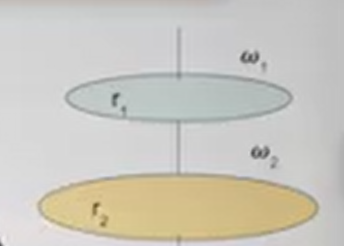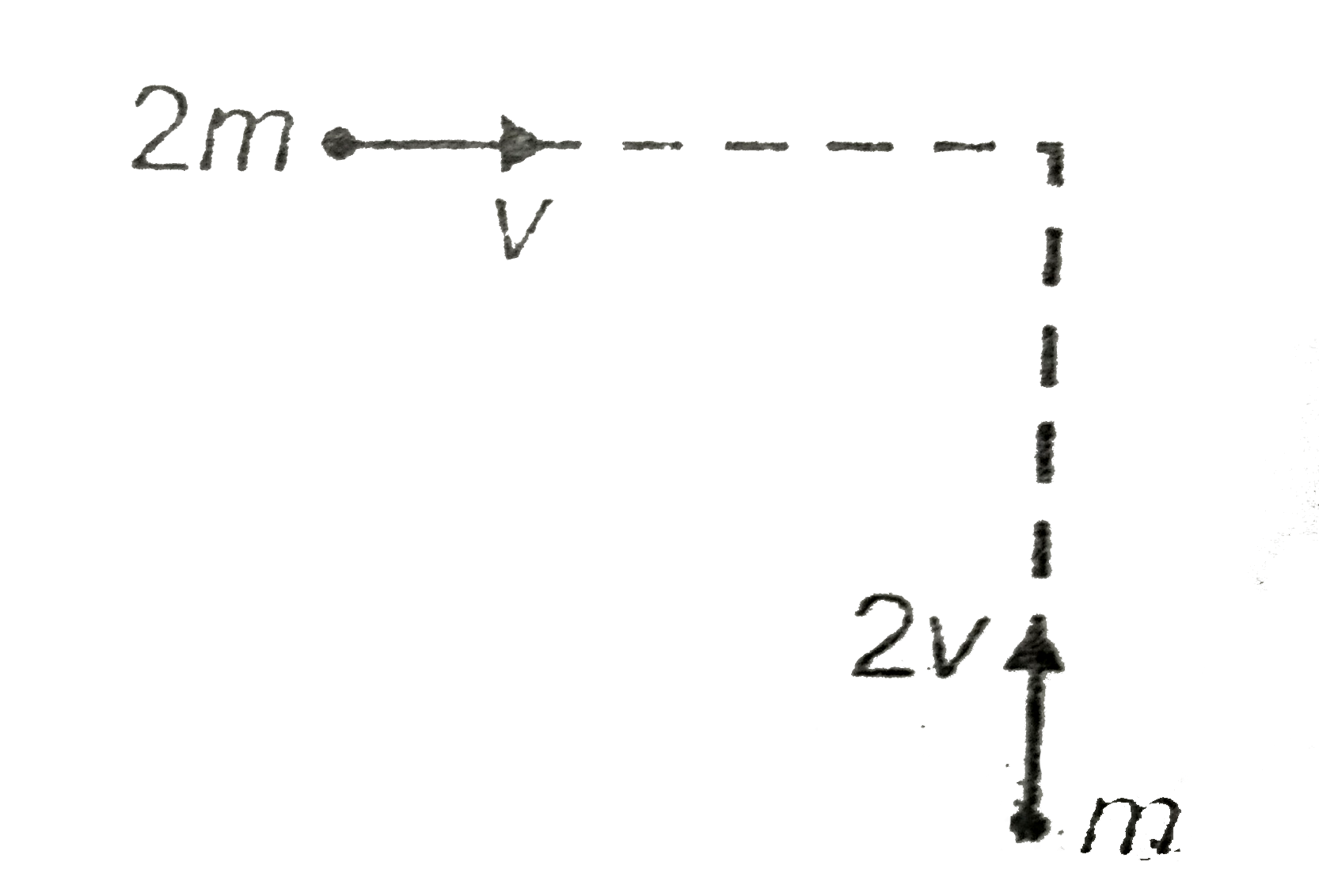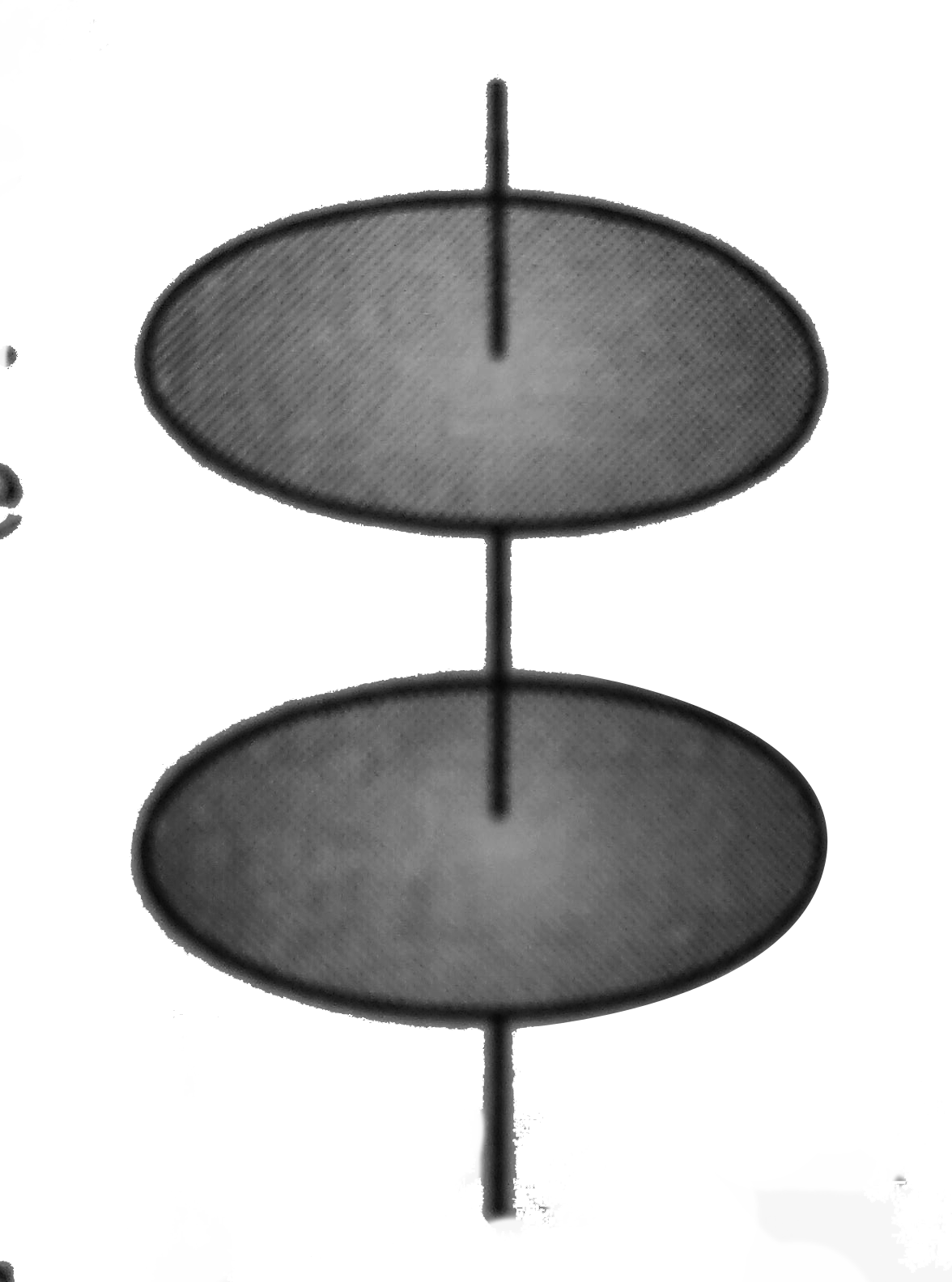Two coaxial discs rotating in the same sense, stick to each other and spin with common angular speed. Find the loss in kinetic energy of the system? 
Step by step video & image solution for Two coaxial discs rotating in the same sense, stick to each other and spin with common angular speed. Find the loss in kinetic energy of the system? by Physics experts to help you in doubts & scoring excellent marks in Class 12 exams.
Updated on:21/07/2023Similar Questions
A disc rotated about its central axis and gently placed on another coaxial disc at rest. Due to friction between the two first disc retards and the second one starts rotating and after some time both with rotate with a common angular speed. In this process the total internal energy of the system of two discs does not change. State and justify whether this statement is true or false.
View SolutionTwo particles of mass 2m and m moving with speed v and 2v respectively perpendicular to each other collides perfectly inelastically, then

Loss in kinetic energy of the system
View Solution
Knowledge Check
Two uniform circular discs are rotating independently in the same direction around their common axis passing through their centres. The moment of inertia and angular velocity of the first disc are 0.1 kg −m2 and 10 rad s−1 respectively while those for the second one are0.2 kg −m2 and 5rad s−1 respectively. At some instant they get stuck together and start rotating as a single system about their common axis with some angular speed. The Kinetic energy of the combined system is:
A23 JB103 JC53 JD203 J
Two identical discs are positioned on a vertical axis as shown in the figure. The bottom disc is rotating at angular velocity ω0 and has rotational kinetic energy K0. Change in the rotational kinetic energy of the system isAK0/2B−K0/2C−K0/4DK0/4Rod AB is placed on smooth horizontal plane and two particle each having same mass m as rod, strikes the rod simultaneously and stick as it as shown. Find the loss in kinetic energy due to collision.
 Amv203Bmv206C6mv207Dmv207
Amv203Bmv206C6mv207Dmv207
A block moves with a certain speed and collides with another identical block kept at rest . There is maximum possible loss of kinetic energy in this collision . Find the ratio initial kinetic energy of the sustem to that with final kinetic enegy of the system .
View SolutionA thin hollow cylinder
slides without rotating with a speed v.
Find the ratio of kinetic energies in the two cases.
View SolutionTwo discs of moments of inertia I1andI2 about their respective axes (normal to the disc and passing through the centre) and rotating with angular speeds ω1andω2 are brought into contact face to face with their axes of rotation coincident.
(a) Does the law of conservation of angular momentum apply to the situation ? Why ?
(b) Find the angular speed of the two-disc system.
(c ) Calculate the loss in kinetic energy of the system in the process.
(d) Account for this loss.
View SolutionTwo discs have moments of intertia I1andI2 about their respective axes perpendicular to the plane and passing through the centre. They are rotating with angular speeds, W1andW2 respectively and are brought into contact face to face with their axes of rotation coaxial. The loss in kinetic energy of the system in the process is given by :
View SolutionTwo discs of moments of inertia I1 and I2 about their respective axes (normal to the disc and passing through the centre), and rotating with angular speed ω1 and ω2 are brought into contact face to face with their axes of rotation coincident. What is the loss in kinetic energy of the system in the process?
View Solution
